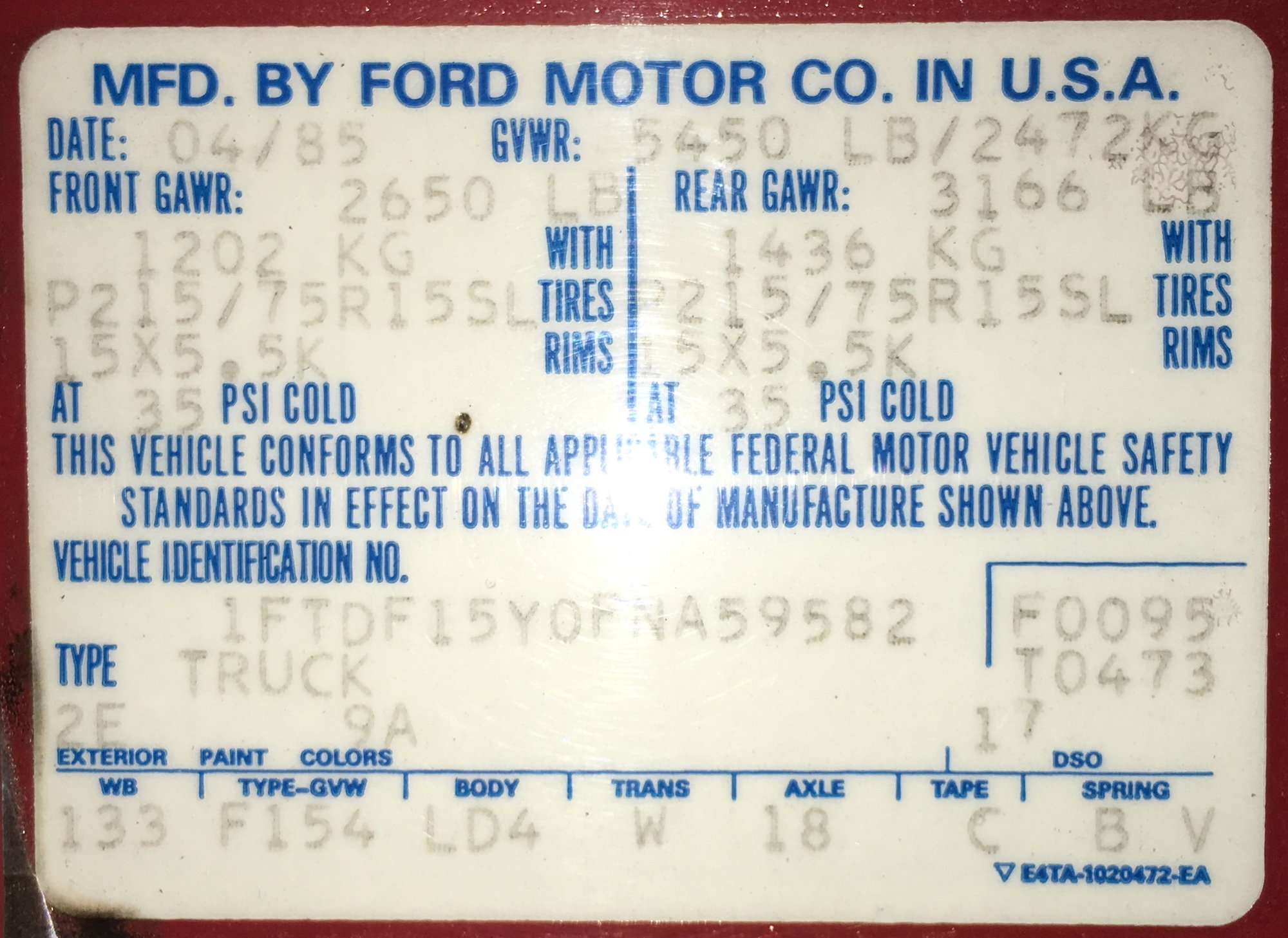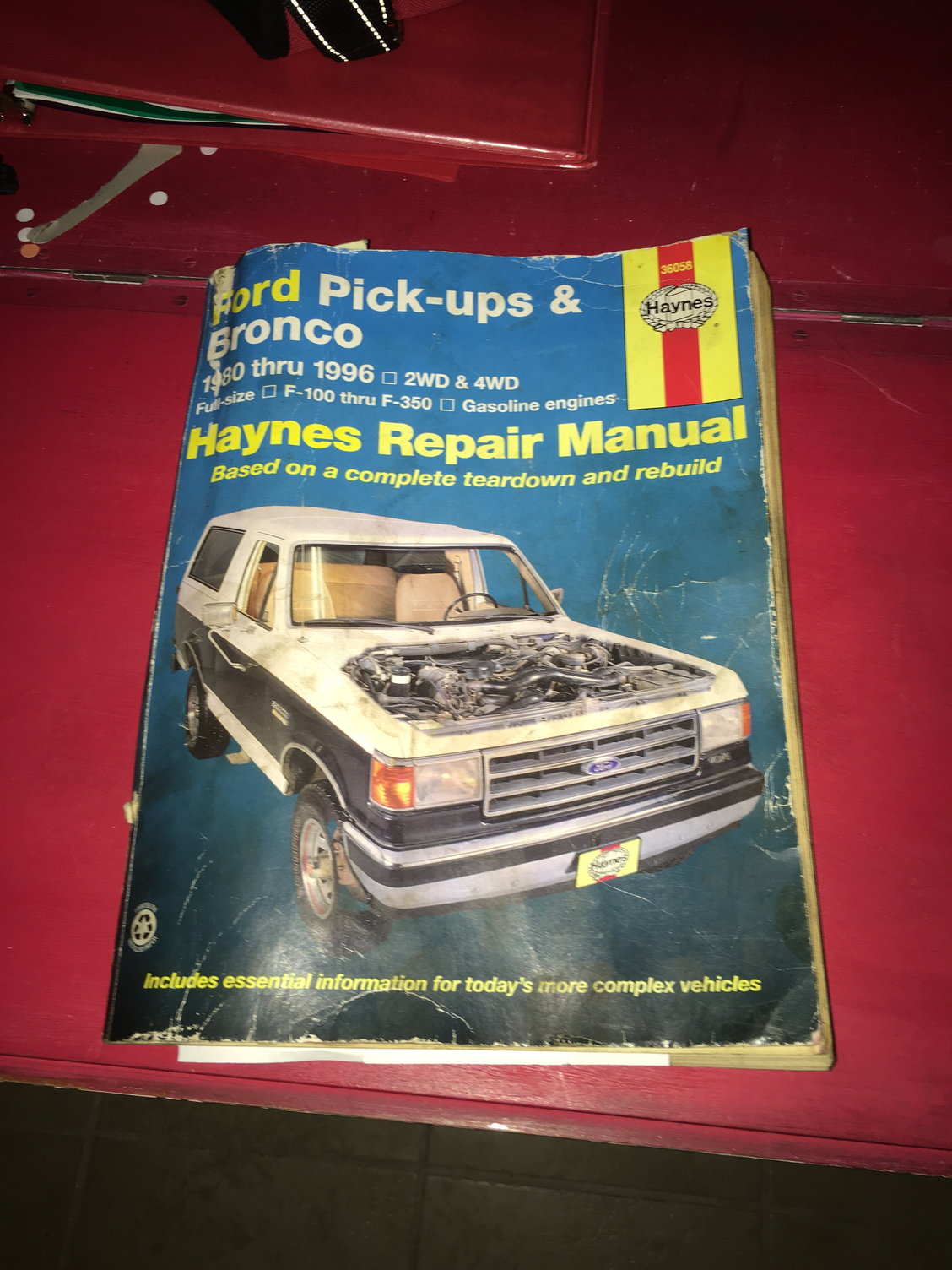1985 F150 4.9L 300 Sputtering
#1
Hereís the deal....I have my Grand-Dadís truck and am trying to get it going again (DISCLAIMER: I am a brand new mechanic and am learning as I go, my depth of knowledge is shallow but am a quick learner).
I Have replaced the fuel tank, sending unit, fuel line, fuel pump, alternator, distributor cap and pin, plugs and many other parts. I recently bought a new one barrel carb and replaced the old one barrel carb. The truck starts right up and will idle fine. When I drive (when cold) it will sputter when I put it in drive but then will run OK until I get to a cruising speed then it sputters, chugs, spits enough to shake the truck and make me think my front end is about the shake off. But, if I accelerate it smooths out and runs just fine.
If I turn off the motor run inside and come out to start again, it will start but acts like it flooded and is/can be a little harder to start. Additionally, when I park it smells of gas around the truck.
I am thinking itís either a vacuum or timing.
Any suggestions?
I Have replaced the fuel tank, sending unit, fuel line, fuel pump, alternator, distributor cap and pin, plugs and many other parts. I recently bought a new one barrel carb and replaced the old one barrel carb. The truck starts right up and will idle fine. When I drive (when cold) it will sputter when I put it in drive but then will run OK until I get to a cruising speed then it sputters, chugs, spits enough to shake the truck and make me think my front end is about the shake off. But, if I accelerate it smooths out and runs just fine.
If I turn off the motor run inside and come out to start again, it will start but acts like it flooded and is/can be a little harder to start. Additionally, when I park it smells of gas around the truck.
I am thinking itís either a vacuum or timing.
Any suggestions?
#2
When you bought/installed the new carb, did you adjust float or air/fuel needles? This is important for correct fuel flow rates.
https://itstillruns.com/adjust-carte...r-7902949.html
https://itstillruns.com/adjust-carte...r-7902949.html
The following users liked this post:
Reedhands (07-25-2018)
#3
Member

Join Date: Jan 2018
Location: Memphis, TN, Earth, Milky Way
Posts: 11,256
Received 1,731 Likes
on
1,487 Posts
First: get a Haynes manual, and read it. Read this caption before buying one, though:

(phone app link)
Second: collect all the truck's details as this caption describes, and put them into your signature so we can review them when we want to reply:

(phone app link)
Generally, Liters are used to describe EFIs; carb engines are described in cubic inches, and the big I6 is a 300ci. Does yours still have the factory 1bbl carb? Put the answer in your sig. along with EVERYTHING else about the truck. Post pics as linked in that caption.
Third: when you list replacement parts, tell us (for EACH one) what symptom made you suspect that part, what diagnosis led you to determine it was bad, what you replaced it with (brand, PN, & source), when (time/miles), and if the replacement passed the same test(s) the original failed. Be specific & thorough - "many other parts" doesn't tell us anything useful. List each one, with its details.
Have you EVER heard or felt the engine backfire? What exactly do you mean by "acts like it flooded"?

(phone app link)
Second: collect all the truck's details as this caption describes, and put them into your signature so we can review them when we want to reply:

(phone app link)
Generally, Liters are used to describe EFIs; carb engines are described in cubic inches, and the big I6 is a 300ci. Does yours still have the factory 1bbl carb? Put the answer in your sig. along with EVERYTHING else about the truck. Post pics as linked in that caption.
Third: when you list replacement parts, tell us (for EACH one) what symptom made you suspect that part, what diagnosis led you to determine it was bad, what you replaced it with (brand, PN, & source), when (time/miles), and if the replacement passed the same test(s) the original failed. Be specific & thorough - "many other parts" doesn't tell us anything useful. List each one, with its details.
Have you EVER heard or felt the engine backfire? What exactly do you mean by "acts like it flooded"?
The following users liked this post:
Reedhands (07-25-2018)
#4
Senior Member
Also check the choke. I removed the electric/exhaust choke and put in a manual one. Kinda sounds like you might be suffering from this as well. Plus Adjusting the float level will help. Also put a vacuum gauge on the vacuum port and adjust the idle air adjustment screw while the truck is running. You want to get the highest vacuum reading you can get. This will help smooth it out.
The following users liked this post:
Reedhands (07-25-2018)
#5
I did not adjust the Float when I replaced the carb. The reason I replaced the carb was the truck had been sitting for a while and ran horribly (even worse than now) so I rebuilt the carb. Ran OK for a while, but still just wasn’t running great. Because I doubted my skills, I bought a new carb to replace the old one. Didn’t save it (rookie mistake) so now will be starting from scratch on adjusting.
i replaced the fuel pump (mechanical) because a few months ago, while I was driving, it just stopped running. If I dumped gas into the carb I could get it to start, them it died. I took the gas line off of the fuel pump and no gas....so I figured the fuel pump was toast and replaced it. After replacing it...nothing changed, traced the line back and there was a hole in the line.
I replaced the the gas tank because there was a hole in it so I replaced the sending unit as well to get the gas gauge working.
I recently replaced the distributor and plugs because it hadn’t been done in a while and figured it could use a tune up.
i replaced the fuel pump (mechanical) because a few months ago, while I was driving, it just stopped running. If I dumped gas into the carb I could get it to start, them it died. I took the gas line off of the fuel pump and no gas....so I figured the fuel pump was toast and replaced it. After replacing it...nothing changed, traced the line back and there was a hole in the line.
I replaced the the gas tank because there was a hole in it so I replaced the sending unit as well to get the gas gauge working.
I recently replaced the distributor and plugs because it hadn’t been done in a while and figured it could use a tune up.
#7
Also, forgot to answer the question about “feels like it flooded”. So if I drive somewhere and park...if I don’t let the truck sit for an hour or more, when I go to start it back up, it just turns over....I pump the gas a time or 2 and I it will barely start, but it acts like it is about to cut out. If I give it more gas, again, feels like the gas pumps are going to flood it out, but then the engine will rev up, but I get a cloud of smoke out of the tailpipe.
Trending Topics
#8
Sounds like you're flooding it. When you push the gas pedal, the carb will squirt fuel into the intake. This is bad when the engine is not running, and will flood the engine. Instead, the squirt of fuel is to prevent the engine from stumbling when you push the pedal while the engine is running (revving it up or accelerating from a stop light, for instance). From my experience with a carbureted engine, don't ever pump the gas pedal. Instead, tap it lightly once to get the choke plate to release, then crank. Never pump.
#9
Senior Member
WHen an engine is flooded, the best way to start it is to hold the pedal to the floor. This will open the butterfly all the way and force more air into the engine. This will create a better fuel air mixture and help the engine start. If it is flooding, when cranking over the extra gas will go into the exhaust. If after it starts, you hear a bang, thats the extra gas burning off.
Braggs is right. A light tap to close the choke to aid a start. The only time you "pump" the gas is if its stumbling to start. Then the extra pump shot will help.
Braggs is right. A light tap to close the choke to aid a start. The only time you "pump" the gas is if its stumbling to start. Then the extra pump shot will help.
#10
I agree with resetting your carb. A properly adjusted carb and choke will run right and start up with one pump to set the choke as mentioned. Start with the floats, then follow direction for setting up the choke, then start it and adjust your fuel air ratio and accelerator pump if needed. If it still doesn't run right, it's possible that an intake leak can cause some of those symptoms.




